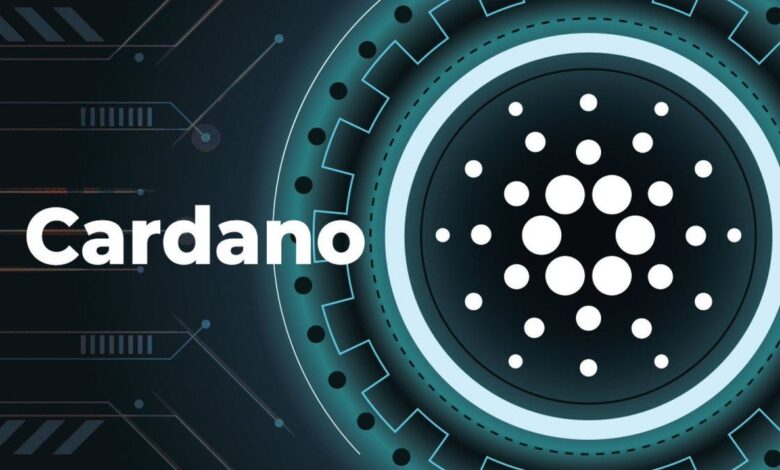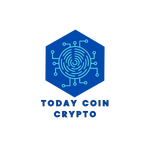Cardano (ADA): A Deep Dive into the Next-Generation Blockchain

Table of Contents
In recent years, blockchain technology has revolutionized various industries, promising transparency, security, and decentralization. Among the multitude of blockchain projects, Cardano (ADA) stands out as a formidable contender for the next generation of this groundbreaking technology. Founded by a team of esteemed academics and experts in 2017, Cardano takes a scientific and research-driven approach to create a blockchain platform that addresses the challenges faced by its predecessors, such as scalability, sustainability, and interoperability.
In this article, we will delve into the intricate architecture of Cardano, exploring its innovative proof-of-stake consensus mechanism, unique layering system, and efforts to establish a truly inclusive and globally adopted financial infrastructure. By analyzing the key features and advancements of Cardano, we aim to gain a comprehensive understanding of its potential to shape the future of blockchain and pave the way for a new era of decentralized applications and digital assets.
Introducing Cardano (ADA): A Paradigm-Shifting Blockchain Platform
Cardano (ADA) is more than just a cryptocurrency; it is a trailblazing blockchain platform that aims to redefine the way decentralized systems function. Launched in 2017 by Ethereum co-founder Charles Hoskinson, Cardano has quickly risen to prominence for its unique approach to blockchain technology. Unlike many other projects in the space, Cardano is grounded in scientific research and principles, boasting a robust peer-reviewed development process that sets it apart from the competition.
At its core, Cardano is a third-generation blockchain, following in the footsteps of pioneers like Bitcoin and Ethereum. However, it addresses some of the fundamental issues and limitations of these earlier iterations, offering increased scalability, sustainability, and interoperability. Let’s delve into the innovative features that make Cardano a next-generation blockchain platform poised to shape the future of decentralized finance.

Unveiling the Innovative Features of Cardano’s Next-Generation Blockchain
- Proof-of-Stake Consensus: Cardano operates on a unique proof-of-stake (PoS) consensus mechanism known as Ouroboros. This innovative approach tackles the energy-intensive nature of proof-of-work (PoW) used by Bitcoin and other early blockchains. By relying on PoS, Cardano drastically reduces its carbon footprint, making it an environmentally friendly alternative to traditional cryptocurrencies.
- Layered Architecture: Cardano’s design comprises two distinct layers – the settlement layer and the computation layer. The settlement layer handles the cryptocurrency ADA and its transactions, while the computation layer is responsible for executing smart contracts. This separation ensures greater security and flexibility, enabling upgrades and maintenance without disrupting the entire network.
- Peer-Reviewed Development: One of Cardano’s standout features is its emphasis on academic research and peer-reviewed development. By leveraging the expertise of scholars and experts, the platform ensures a solid theoretical foundation for its protocols. This approach enhances security, reduces vulnerabilities, and fosters a robust ecosystem of ideas.
- Treasury System: Cardano incorporates a unique treasury system that allows the community to propose and vote on projects to be funded. This democratic governance model ensures community involvement and facilitates the platform’s self-sustaining growth. Projects that receive funding from the treasury contribute to Cardano’s evolution and expansion.
- Interoperability: Cardano envisions a blockchain ecosystem that is not isolated but can seamlessly communicate with other platforms. Its focus on interoperability aims to promote cross-chain communication, fostering a broader decentralized finance (DeFi) landscape and encouraging collaboration between different blockchain projects.
Building for Sustainability: How Cardano Sets Itself Apart from Traditional Blockchains
- Environmental Considerations: While the initial blockchain platforms relied heavily on energy-intensive PoW consensus algorithms, Cardano’s PoS-based Ouroboros stands out for its sustainability. By consuming significantly less energy, Cardano addresses concerns about the environmental impact of blockchain technology, making it an attractive choice for eco-conscious users.
- Long-Term Vision: Cardano’s development approach prioritizes long-term sustainability over rapid implementation. By thoroughly researching and peer-reviewing updates and protocols, Cardano ensures that its technology is built to withstand the test of time, providing a solid foundation for future advancements.
- Inclusive Governance: Cardano embraces a decentralized governance model that allows community members to actively participate in decision-making processes. The treasury system, along with the Cardano Improvement Proposal (CIP) process, gives a voice to all stakeholders, encouraging an inclusive and diverse ecosystem.
- Scalability: Scalability has long been a challenge for blockchain platforms, but Cardano has taken steps to address this limitation. Through its layered architecture and ongoing improvements, Cardano can scale effectively as adoption and demand increase, ensuring that the network remains efficient even during peak times.
- Real-World Applications: Cardano’s focus on real-world use cases sets it apart from many other blockchain projects. The platform seeks to bridge the gap between the blockchain industry and traditional sectors by providing practical solutions and fostering adoption across various industries, including finance, supply chain, and healthcare.
Also read: Exploring the Potential of Aether: Decentralized Finance and Beyond
Ouroboros: The Ingenious Consensus Algorithm Powering Cardano’s Security
Cardano, one of the leading blockchain platforms in the cryptocurrency space, owes a significant portion of its success to the ingenious consensus algorithm that underpins its security: Ouroboros. Developed by a team of researchers led by Professor Aggelos Kiayias, Ouroboros is a groundbreaking proof-of-stake (PoS) algorithm that addresses some of the key challenges faced by traditional consensus mechanisms like proof-of-work (PoW).
Unlike PoW algorithms, which rely on miners to solve complex mathematical puzzles to validate transactions and add blocks to the blockchain, Ouroboros utilizes PoS principles. In the PoS model, validators (also known as stakeholders) are chosen to create new blocks and secure the network based on the number of coins they hold and are willing to “stake” as collateral. This approach significantly reduces the energy consumption associated with blockchain networks while maintaining a high level of security.
Ouroboros achieves security by dividing time into epochs and slots, where epochs represent longer periods during which blocks are created and slots represent smaller time intervals within each epoch. The algorithm randomly selects a group of validators to participate in each slot, ensuring fairness and preventing concentration of power.
The concept of Ouroboros is akin to the ancient symbol of a serpent eating its own tail, representing the cyclic nature of the blockchain’s security process. This cyclic approach ensures that each epoch’s last block serves as a “seed” for the selection of validators in the subsequent epoch, creating a secure and tamper-resistant network.
Furthermore, Ouroboros has been peer-reviewed and formally verified, adding an extra layer of assurance to its robustness and reliability. This feature makes Cardano stand out among its competitors, as security remains a paramount concern in the decentralized finance (DeFi) era.
With Ouroboros at its core, Cardano has solidified its position as a secure and scalable blockchain platform, enabling a wide range of applications beyond just cryptocurrencies. The algorithm’s innovation and eco-friendly approach have garnered significant attention from developers, businesses, and investors alike, making Cardano an essential player in the future of decentralized applications.

Cardano’s Smart Contract Platform: Unlocking Endless Possibilities for Developers
Cardano, often dubbed the “Ethereum killer,” has rapidly emerged as a leading smart contract platform, aiming to overcome some of the scalability and sustainability issues faced by its predecessors. Spearheaded by Input Output Hong Kong (IOHK) and the visionary Charles Hoskinson, Cardano’s smart contract capabilities hold the promise of unlocking endless possibilities for developers and ushering in a new era of decentralized applications (dApps).
Smart contracts are self-executing agreements that run on blockchain networks, automating and enforcing the terms of a contract without intermediaries. This technology has the potential to revolutionize various industries, from finance and supply chain management to gaming and social media.
Cardano’s approach to smart contracts is unique in that it takes a research-driven and academically rigorous route to development. The platform’s smart contract functionality is powered by Plutus, a high-level scripting language, and Marlowe, a domain-specific language tailored for financial contracts.
Plutus allows developers to create sophisticated smart contracts that leverage the full potential of Cardano’s security and scalability. It is based on Haskell, a robust functional programming language, which ensures that contracts are rigorously tested and less prone to bugs and vulnerabilities. Moreover, Plutus enables a more flexible and secure coding environment, minimizing the risk of critical vulnerabilities that have plagued some other smart contract platforms.
Marlowe, on the other hand, targets a different audience: financial experts and non-programmers. By providing a user-friendly interface, it empowers professionals with limited programming knowledge to create financial smart contracts seamlessly. This democratization of contract creation opens up the world of decentralized finance (DeFi) to a broader audience, fostering innovation and inclusivity.
Cardano’s smart contract platform also differentiates itself through its unique two-layer architecture. While Ethereum’s approach bundles all contracts into a single layer, Cardano separates the settlement layer from the computation layer. This separation enhances efficiency, allowing developers to upgrade contracts without disrupting the underlying blockchain.
With its robust and academically backed smart contract platform, Cardano is poised to revolutionize the blockchain landscape. The platform has become a magnet for developers seeking an environmentally friendly and scalable solution to build a diverse array of decentralized applications. As Cardano continues to evolve and expand its ecosystem, the potential for unlocking endless possibilities in the decentralized world becomes more and more apparent.
Embracing Interoperability: How Cardano Promotes Seamless Integration with Other Blockchains
Interoperability, the ability of different blockchain networks to communicate and share information seamlessly, has become a crucial aspect in the rapidly expanding world of decentralized technologies. Cardano, as a forward-thinking blockchain platform, has embraced this concept and developed solutions to promote seamless integration with other blockchains, opening doors to cross-chain collaboration and increased functionality.
Cardano’s approach to interoperability revolves around two main components: sidechains and cross-chain communication protocols.
- Sidechains: Cardano’s design allows for the creation of sidechains, which are auxiliary blockchains connected to the main Cardano blockchain. Sidechains enable developers to experiment with new features, conduct testing, and deploy specialized applications without affecting the main network’s performance and security. These sidechains can interact with the main Cardano blockchain, facilitating the exchange of assets and data in a secure and efficient manner.
- Cross-Chain Communication Protocols: To achieve interoperability with other blockchain networks, Cardano has been working on protocols that allow different blockchains to communicate effectively. By enabling cross-chain communication, Cardano paves the way for the seamless transfer of assets and data between disparate ecosystems. This not only encourages collaboration between different projects but also expands the use cases and functionalities of the Cardano network.
By embracing interoperability, Cardano recognizes that no single blockchain can fulfill every use case or requirement in the decentralized landscape. The ability to connect and share resources with other blockchains enables developers and users to leverage the strengths of multiple networks while mitigating their weaknesses.
Interoperability also promotes healthy competition and cooperation in the blockchain space. It fosters an environment where innovation can flourish, leading to a more diverse and robust blockchain ecosystem.
As Cardano continues to evolve, its commitment to interoperability sets it apart as a forward-looking and inclusive platform. By collaborating with other blockchain projects and promoting cross-chain communication, Cardano plays a vital role in shaping the future of decentralized technologies.
The Road to Decentralization: Cardano’s Governance and Its Community-Driven Future
Decentralization lies at the heart of the blockchain revolution, aiming to democratize power and decision-making processes. Cardano, a trailblazer in the field, has made significant strides toward decentralization, setting a benchmark for other projects to follow. At the core of Cardano’s path to decentralization is its unique governance model and the unwavering support of its vibrant community.
Cardano’s governance model is built on the principles of on-chain governance and stakeholder participation. The platform’s consensus algorithm, Ouroboros, allows stakeholders to actively participate in decision-making by holding ADA, the native cryptocurrency of the Cardano network. ADA holders can propose and vote on protocol upgrades, changes, and improvements, ensuring that the community has a significant say in the network’s future.
The evolution of Cardano’s governance follows a well-defined roadmap, which is outlined in a series of development phases. Each phase gradually transfers control and decision-making authority from the core development team to the community. As a result, Cardano’s governance becomes increasingly decentralized over time.
The initial phases of Cardano’s governance primarily involved input from a select group of experts and the core development team. However, as the platform matures, these phases transition towards more open and inclusive mechanisms that allow a broader community of stakeholders to participate actively.
The community’s role in Cardano’s governance cannot be overstated. The Cardano community consists of developers, enthusiasts, investors, and users, all of whom play a crucial role in shaping the platform’s future. The community actively engages in discussions, proposes ideas, provides feedback, and votes on important decisions. This decentralized decision-making process ensures that no single entity or group holds undue influence over the platform’s trajectory.
Moreover, the Cardano community has a global reach, fostering inclusivity and diversity in its decision-making processes. This international collaboration leads to a broader range of perspectives, enabling more comprehensive and innovative solutions to emerge.
As Cardano continues its journey toward full decentralization, it remains committed to its vision of creating a sustainable, scalable, and community-driven blockchain platform. The road to decentralization is an ongoing process that requires the active involvement of all stakeholders. Cardano’s pioneering governance model and its dedicated community make it a prime example of how decentralized technologies can lead us to a more equitable and inclusive future.
Also read: Aether Smart Contracts: Enabling Trustless Transactions
FAQS
Q1: What is Cardano, and what makes it a next-generation blockchain?
A1: Cardano is a blockchain platform and cryptocurrency known for its scientific approach to development and peer-reviewed research. It is considered a next-generation blockchain because it aims to solve some of the scalability, sustainability, and interoperability issues that older blockchains face.
Q2: Who created Cardano, and when was it launched?
A2: Cardano was created by Charles Hoskinson, one of the co-founders of Ethereum. The project was initiated in 2015, and its blockchain went live in September 2017.
Q3: What sets Cardano apart from other cryptocurrencies like Bitcoin and Ethereum?
A3: Unlike Bitcoin and Ethereum, which rely on a Proof-of-Work (PoW) consensus mechanism, Cardano uses a unique consensus protocol called Ouroboros. This Proof-of-Stake (PoS) algorithm offers higher energy efficiency and allows ADA holders to participate in block validation and earn rewards.
Q4: How does Cardano approach scalability and sustainability?
A4: Cardano employs a layered architecture that separates the settlement layer (where ADA transactions take place) from the computation layer (where smart contracts are executed). This separation allows for more efficient scalability and enables upgrades without disrupting the main protocol.
Q5: Can you explain Cardano’s focus on academic research and peer-reviewed development?
A5: Cardano prioritizes academic research to ensure that its technology is built on solid scientific principles. The development process involves peer-reviewed papers, formal methods, and expert feedback, leading to a more secure and reliable blockchain platform.
Q6: What is the significance of the ADA cryptocurrency in the Cardano ecosystem?
A6: ADA is the native cryptocurrency of the Cardano platform, used for various purposes, including transactions, staking, and participating in the governance of the network. It plays a crucial role in securing the blockchain and incentivizing participants.
Q7: How does Cardano promote interoperability with other blockchains?
A7: Cardano aims to achieve interoperability through its sidechain development approach. By connecting different sidechains to the main blockchain, Cardano can facilitate seamless communication and data exchange between different blockchain networks.
Q8: What are some notable projects and developments on the Cardano platform?
A8: Some notable projects on Cardano include Marlowe, a domain-specific language for financial contracts, and Plutus, a smart contract platform for developers. Additionally, Cardano has been actively exploring partnerships with governments and institutions to foster real-world adoption.
Q9: Is Cardano’s technology fully developed and operational?
A9: While Cardano has made significant progress, it follows a phased development approach. The platform has been implemented in several stages, with each stage bringing new features and enhancements. Ongoing research and development continue to improve the platform’s capabilities.
Q10: What does the future hold for Cardano?
A10: Cardano’s future looks promising as it aims to become a robust, sustainable, and globally adopted blockchain platform. With its focus on research, academic partnerships, and innovative solutions, Cardano strives to address the challenges faced by traditional blockchains and usher in a new era of decentralized applications and financial systems.




